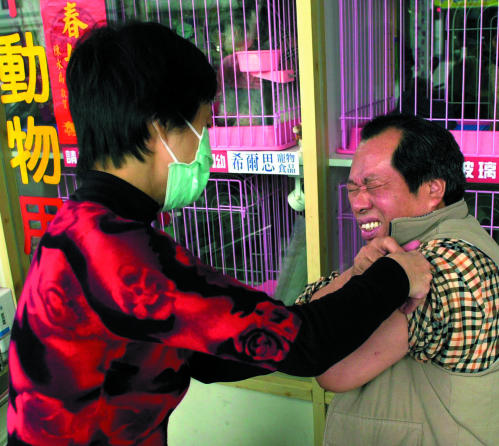Traditionally, human medicine and veterinary medicine tend to be viewed separately. Doctors treat people, and vets look after animals. Of course differences exist between the two types of patients and options for treatment. Euthanasia, for example, tends not to be looked on favourably in humans, whereas in veterinary medicine it might be the best approach. Similarly, culling infected individuals or those suspected of being infected is not an option for controlling an outbreak of infectious disease in humans but may well be so in animals. Doctors usually have the advantage over vets in that they can talk to their patients; for vets, life would be so much easier if their patients could talk.
Despite the differences between the two professions they have common interests and share challenges. Vets and doctors are having to work together more and more—for example, over fears that avian influenza could be the harbinger of a human pandemic1 and over control of food borne zoonoses.
Without adequate safeguards, diseases of people and animals can now move more quickly around the world. Controls and contingency plans must be drawn up in tandem, whether the disease threat is natural, as with SARS, or caused by humans, as in a potential bioterrorist attack. Antimicrobial resistance also presents challenges to doctors and vets alike.
With increasing urbanisation we can easily forget the extent to which people depend on animals. In the developing world many people rely on animals for food and transport (whether of people or goods)—and the health of those animals can mean the difference between life and death. Closer to home, livestock are important economically but animals are also a source of companionship. Half of all households in the United Kingdom own a pet (www.pfma.com/public/petownership_stats.htm), and many pets are just as important as a family member or friend, sometimes more; for them, the same level of health care is expected. Cost of treatment and subsequent quality of life is an issue for the care of animals and humans.
Figure 1.
A pet and bird shop owner in Taiwan gets vaccination for avian flu
Credit: JEROME FAVRE/AP
Doctors may not fully appreciate the importance of the relationship between owners and their animals. This may be relevant when, for example, advising immunocompromised patients of any risk from their pets, or considering the implications of taking an elderly pet owner into care in an environment where animals are banned. When advising patients about owning pets, doctors now have to weigh up the risks of developing allergies.2
The BMJ and the Veterinary Record plan simultaneous publication of theme issues exploring how the two professions can collaborate for mutual benefit. We would like to cover topics such as the investigation and control of infectious diseases; zoonoses; medical and veterinary education; professional regulation; and issues related to pet ownership. The theme issues, to be published in November 2005, will be a mix of papers, debate pieces, editorials, and reviews. We are particularly interested in original research relevant to both disciplines. The deadline for submissions of original research is 30 May 2005.
Competing interests: None declared.
References
- 1.Parry J. Officials report first Cambodian case of avian flu. BMJ 2005;330: 273. [DOI] [PMC free article] [PubMed] [Google Scholar]
- 2.Ownby DR, Johnson CC, Peterson EL. Exposure to dogs and cats in the first year of life and risk of allergic sensitisation at 6 to 7 years of age. JAMA 2002;288: 963-72. [DOI] [PubMed] [Google Scholar]



